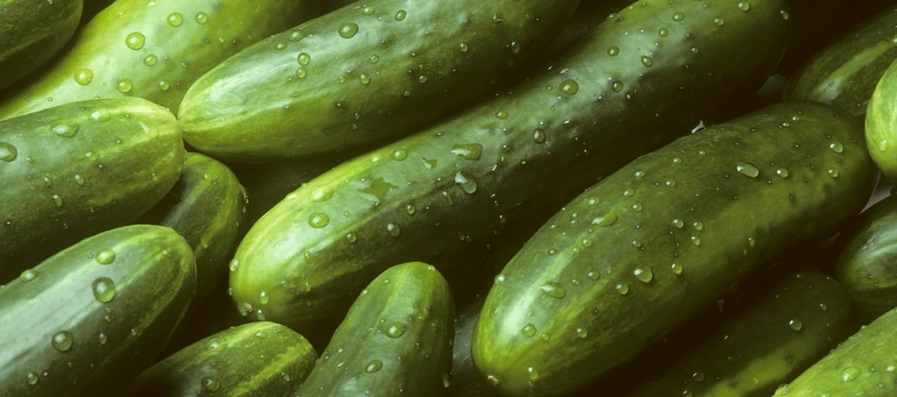If you haven’t read about GMOs or at least heard the arguments for and against them over the last few years, you’ve been living under a rock. In the States, it’s a huge issue and hot button topic that’s caused a lot of controversy and panic that these GMOs could potentially be harmful to eat.
Let’s take a look at this discussion. But first, the basics.
What is a GMO?
GMO stands for Genetically Modified Organism. In its most simple form, a GMO is an organism that’s had its genetic material altered to produce specific characteristics. Food and animals can both technically qualify as a GMO. In fact, the neon GloFish that you see swimming around in pet stores have been genetically modified, so GMOs can really cover a lot of ground. But the types of GMOs that we’re going to be talking about are of the food variety – more specifically, fruits and vegetables that have been genetically engineered to produce better crops.
For years, people have associated GMOs with all types of health issues and environmental concerns, but there hasn’t been any cold hard data to definitively back those claims up. And the uncertainty of how these genetically modified organisms could potentially affect humans is one of the more obvious reasons for the severe backlash against GMOs and the farmers and food manufacturers that produce them.
The Good, The Bad, and The Ugly
While the controversies that surround GMOs (especially what we hear on the news) mainly focus on whether or not they’re good for human consumption and whether they have any serious negative impact on the environment. They don’t, however, focus solely on consumers vs big agra or farmers. The growing debate includes the role of the government in regulating and labeling GMOs, the legitimacy of research and publications from biotech companies and scientists, and how it affects the overall farm economy.
The Bad
The most common critique of GMOs stems from the worry that genetically modifying crops could result in dangerous food being sold to consumers. Add that to the fact that the FDA (the Food and Drug Administration in the U.S.) doesn’t require any labeling for GMOs (so GMO and non-GMO products are being sold side by side in grocery stores) AND there’s no set government regulation for testing GMOs to ensure that they’re safe to eat, and you have a perfect storm for mass panic.
The potential for damage to the environment is another red flag for the anti-GMO movement. A study in 1999 linked pollen from maize that is grown with a gene (Bt) that acts as a pesticide to the decrease in milkweed – a plant essential to the continued existence of the monarch butterfly. A few years later, new research found that the Bt maize effect on the monarch butterfly population was negligible, but that hasn’t decreased the concern over environmental issues.
The Good
To this day, there hasn’t been a documented case of ill effects in humans from genetically modified food. And this comes from recent research studies conducted by the American Medical Association, The Institute of Medicine, and the National Research Council, among others.
Even Bill Nye has recently rescinded some of his past ideas on GMOs and their role in health and the environment. Although, this has caused quite a bit of controversy in and of itself given that Nye’s remarks come after spending time with scientists and researchers at Monsanto – a large multi-national agra company that’s also generally thought of as the most evil company in the world.
There’s also a huge potential for genetically modified crops that require less-than-ideal growing conditions. This could mean that areas around the globe that aren’t in prime farming areas could benefit from local agriculture. It could also mean better and more plentiful crops that could help solve food shortage crises in many second and third world countries. It’s hard to view GMOs in a negative light when the possible advantages from getting it right have the potential to dramatically increase the quality of life for many people.
There’s still a lot of headway to be made in furthering GMO research, and it’s still a bit early to tell whether or not genetically modified foods are or could be harmful to the environment and/or to people. But as it currently stands, there’s not a lot of evidence that definitely proves that GMOs are bad. But we want to hear from you – do GMOs concern you? Do you think the potential pros outweigh the potential cons? Let us know in the comments!






CULINARY EXCHANGE,
YOU SHARED SOME GOOD POINTS, AND I AGREE THAT THE COST/BENEFIT OF GMOS HAS NOT BEEN FULLY DETERMINED. HOWEVER, I’M UPSET ABOUT THE FACT THE FDA HAS NOT MANDATED LABELING, AS YOU’VE NOTED IN YOUR ARTICLE. PART OF THE VERDICT WHETHER GMOS SHOULD SUCCEED OR NOT SHOULD BE DETERMINED BY CAPITALISM AND A FREE MARKET. THAT IS NOT POSSIBLE WHEN CONSUMERS DO NOT HAVE ALL THE FACTS AVAILABLE. I BELIEVE THAT THE ABSENCE OF REAL LABELING LIMITS AMERICAN CONSUMERS FROM VOTING WITH THEIR DOLLARS ON WHAT THEY WANT TO CONSUME – GMOS OR NONGMOS.
THANK YOU FOR PROVIDING A FORUM FOR THIS DISCUSSION!
Dear Nacho Libre,
Excellent point. One must have all the information at their disposal to make educated decisions. Thank you for contributing!
Matthew
The Culinary Exchange
I have never disagreed with the whole GMO debate. I agree that genetically modified seeds and plants may play an important role in reducing hunger world wide, allowing some regions to farm sustainable plants in areas which have been barren in the past. I am cautious, however, as I have a son who developed benign brain tumors and his neurosurgeon hypothesizes that these may be a result of genetically modified foods, most specifically hormones in meats and disruptions in the makeup of certain plants. I know the science is lacking at this point, but I will err on the side of caution at this point, for my son’s health. I look forward for more scientific debate on this topic.
Thanks for the comment and taking part in the discussion Susan! An interesting perspective. It will be interesting to see how the science plays out.